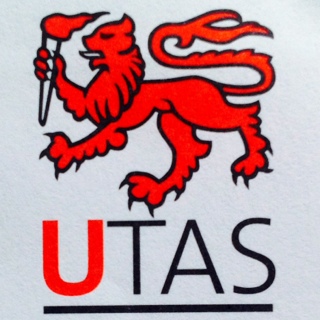Information
-
University of Tasmania Workplace Inspection Checklist- Laboratory
-
Client / Site
-
Conducted on
-
Prepared by
-
Location
-
Personnel
1.0 - Previous inspection
-
1.1 - Has the last inspection been reviewed?
-
1.2 - Are there no outstanding actions?
-
General Housekeeping
-
The general area is tidy (benches, floors, cupboards and shelves) and free of obstructions and mess such as slip/trip hazards (uneven floors, power leads etc.)
-
All aisles are unobstructed and of sufficient width ( 1m minimum)<br>
-
Spaces between and under benches, cabinets and equipment are accessible for cleaning<br>
-
Lighting is functional and adequate<br>
-
Hand basin or alternative means of decontaminating hands is available within the laboratory (must be hands free in PC2 laboratories)<br>
-
The laboratory safety manual is clearly available eg on line, hard copy at central location <br>
-
Facilities for the storage of outer garments and personal items are available outside of the laboratory<br>
-
There is a procedure for waste disposal and sufficient and appropriate segregated waste disposal containers<br>
-
There are appropriate Sharps disposal containers available<br>
-
Exposure to noise is prevented<br>
-
General ventilation, temperature and humidity is sufficient<br><br>
Signage Requirements
-
Entrance signage indicates:<br>Laboratory Manager contact details<br>Authorised access only<br>No food or drink allowed<br>Warning signs are posted for ie chemical, biological, radiation<br>Any other information such as PPE required
-
First aid signage is visible and contains details of first aid officers for the area
-
Fire wardens with current contact details signage is visible
-
Emergency exits are clearly marked with exit doors being clearly visible, egress clear and closed but not locked from the inside
-
Emergency exit plans in prominent positions
-
Safe work procedures are available, ideally displayed next to equipment
Emergency Requirements
-
A first aid kit is available in the near vicinity in the adequate for the type of work undertaken
-
Fire equipment is appropriate, accessible and free of obstructions
-
Fire extinguishers have been inspected/ tagged within the last 6 months
-
Safety shower is functional and checked regularly
-
Emergency eyewash station is available and checked regularly
-
Where an experiment is to be left unattended overnight or at weekends, are signs attached to equipment indicating the relevant person to be contacted in the event if a failure/ problem
Furniture and Equipment Requirements
-
Electrical equipment is inspected, tested, tagged and in date
-
Equipment is in good order
-
Double adapters are not in use
-
Extension leads are inky used for temporary, short term connection
-
Power boards with RCD protection are used if not enough GPOs (power points)
-
Fume cupboards and bio safety cabinets have been tested and are in date
-
Fume cupboard/s free of clutter and bit used for storage of chemicals
-
Chairs/stools in area are if appropriate height
PPE/Manual Handling
-
PPE is available, in good condition and stored appropriately
-
Frequently used or heavy items are stored between knee and shoulder height
-
Ladders are accessible to access items stored on high shelves if required. Short ladders are allowed but must comply with AS/NZS 1892 (2000)
-
Manual handling aids are available if required, such as Winchester carriers, lifting trolleys etc
Chemical Aspects
-
A register of chemicals and Safety Data Sheets (SDS) are available on line and/or central hard copy
-
Documented Risk Assessments are available for chemical use
-
Appropriate labels are present on containers that are used for hazardous substances
-
All containers are labelled correctly according tot the current Code of Practice
-
All chemicals are stored according to compatibility
-
Chemicals not in use are placed in correct storage locations eg flammable, corrosive cabinets
-
Flammable sand corrosives are stored in approved cabinets. Toxic/S8 chemicals are stored in locked cabinet
-
Estimate and record the total volume of flammable liquids stored in this laboratory -assume that all bottles present are full
-
Refrigerators are suitably labelled, such as 'no food and drink to be stored' or 'biohazard'
-
Are flammable a stored in refrigerators? Has fridge been modified or of not has a risk assessment been completed?
-
Are there bunding or spill trays (such as kitty litter trays) for the storage of hazardous liquids
-
Spill kits are available and maintained. Kits include avid/base kit, bucket of sand or vermiculite and PPE such as gloves and respirators with in date cartridges
-
Segregated waste disposal containers are available and labelled correctly
Compressed /Liquified Gas Aspects
-
Compressed gas cylinder contents are appropriately identified and in good general order
-
All cylinders are at least 3m away from ignition sources and combustible material<br>
-
Cylinders are secured appropriately by brackets/chain
-
Empty cylinders are separated from full ones and clearly labelled
-
Appropriate resources are available for transporting gas cylinders
-
The pressure regulator is appropriate for the gas being used
-
Gas lines are labelled and free of leaks, kinks or signs of wear and tear
-
All cylinders in the laboratory are connected to equipment ie no storage in the laboratory
-
All reticulated gas lines are clearly labelled
Gas Cylinder Storage Aspects
-
Cylinder storage areas are well ventilated ( in open air preferably )
-
Cylinder storage area are protected from heat sources and fire risks
-
Cylinders are stoop red upright and properly secured
-
Cylinders are segregated according to Dangerous Goods class
Cryogenic Aspects
-
Dewars <25L have handles and loose fitting lids
-
Dewars >25L have wheels and pressure release valves
-
Cryogenic storage areas are appropriately ventilated
-
Policies and procedures for transport and decanting of liquid nitrogen are available to all staff and students
-
All cryogenic storage records are current, adequate and accessible
Biosafety Aspects
-
There is appropriate Biosafety signage at the laboratory entrance and storage rooms
-
Safety documents including licences and permits are current and available eg AQIS and GMO
-
All cultures or bio hazardous materials are correctly labelled
-
A supply of disinfectant for decontamination purposes is available and clearly labelled
-
All keyboards have protective covers
-
Documented risk assessments for use of biological hazards are available
-
Appropriate waste segregation is provided
-
Appropriate waste handling procedures are in place such as autoclaving, disinfecting etc
PC2 laboratories
-
There is appropriate PC2 signage at the laboratory entrance and certification licence displayed along with Laboratory Manager/Technician contact details
-
Biohazard stickers are posted on storage units for microorganisms or recombinant or manipulated DNA products
-
Laboratory gowns are stored in a manner to prevent cross-contamination
-
Biological safety cabinet are provided and are in working order and current test
-
A supply of clearly labelled disinfectants for decontamination purposes are available
Radiation Areas
-
There is appropriate Radiation signage at the laboratory entrance. This includes approved Premise Certification and Licence details, Radiation Safety Officer contact details and Radiation hazard placards
-
All Radiation Licence details are correct
-
All Radiation Certificate of Compliance are current
Lasers- Non ionising Radiation
-
Documented risk assessments and safe work procedures are in place and current
-
All warning symbols are fixed, legible and clearly visible,e on equipment
-
Correct warning labels are attached to the equipment according to the class of laser used
-
Guarding on lasers is effective and in good condition ie beam stops and other fail safe devices
-
All laser Certificate of Compliance current
X-ray and Ionising Radiation Aspects
-
Access to area/room is limited on,y to authorised persons
-
Suitable radiation/contamination monitoring equipment is available and in working condition
-
Decontamination /emergency procedures clearly displayed
-
Documented risk assessments and safe work procedures available and current
-
Work surfaces are impervious and not wooden benches or tiled surfaces
-
Appropriate shielding is available and in good condition
-
All sources are labelled and stored in secure labelled locations
Ultraviolet Radiation Aspects
-
Appropriate warning labelling in place
-
Appropriate shielding and/or interlocks in place
-
Risk assessment and safe work procedures clearly displayed and current
Machinery Safety Aspects
-
All hazardous parts of machines guarded
-
The guards are adequate to prevent injury
-
The guards are adequate to prevent flying debris causing injury
-
There is easy access to emergency stop buttons
-
All instrument logs are up to date
-
Standard operating procedures for machinery and other equipment is current and easily available for users
For HSR or Officer in Charge to complete
-
All projects are covered by risk assessments
-
All tasks covered by up to date task risk assessments
-
All task risk assessment documentation available and easily locatable
-
Are induction records available for this laboratory/suite and if so, where are they filed
-
What licences or permits cover this workplace/area? List and detail specific items ( type in text box after choosing no response)
-
List all routine monitoring and inspections carried out for this laboratory/suite. Provide file references and frequency (enter details after choosing no response)
Sign Off
-
On site representative
-
Auditor's signature









